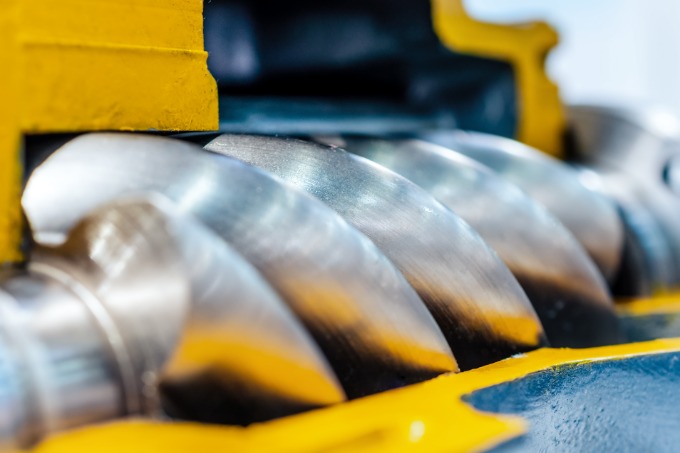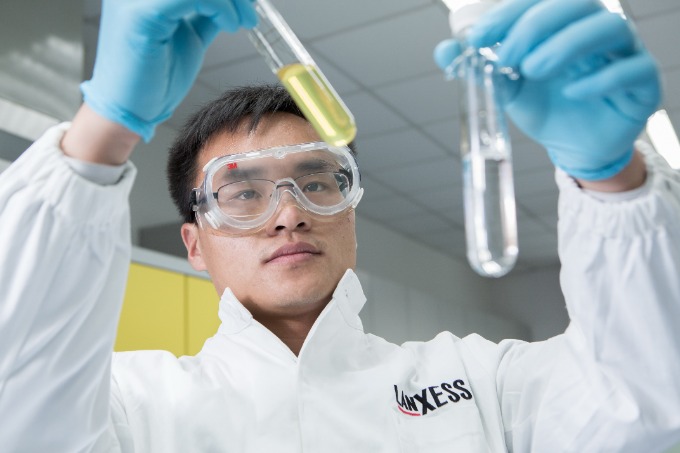Semi-synthetic food grade oils are formulated from synergistic blends of severely hydrotreated, hydrocracked (Group III) base oils to provide a more refined, high-quality product. These are enhanced with premium synthetic esters and proven additive technology, which help to improve viscosity, wear resistance at higher temperatures, and stress levels. Furthermore, this also increases their detergency properties, resulting in clean machinery lubrication.
ANDEROL®’s FG S Series offers some of the most desirable characteristics of a premium, fully synthetic lubricant at a significantly lower price. This makes it the ideal choice for customers looking to take advantage of the benefits afforded from synthetic oils over mineral oils without increasing costs. Compatibility is assured with ANDEROL® S-Series lubricant and there is no need for special precautions when switching from a mineral oil-based lubricant for use with paints, seals, gaskets and hoses.
Successful field trials have shown the oil life of ISO VG 46 and ISO VG 68 exceeds 6,000 hours, and can be as high as 10,000 hours.
The FG S Series has numerous advantages of over mineral oils, including:
• Lower cost (total cost of ownership)
• Energy savings of up to 4 percent
• Synthetic grade protection for expensive equipment
• Superb deposit and sludge control
• Cleaner machinery conditions
• Excellent thermal and oxidative stability
• Superb lubrication and cooling properties
• Excellent heat transfer properties
• High stability even in extreme conditions
• High temperature shear stability
• Low volatility for longer life
• Good demulsibility and foaming resistance
• Excellent high/low temperature performance
• Elimination of seasonal oil changes
• Cooler compressors
• Extended drain intervals
• Extended lifetime (an additional 2,000 hours)
|
Test |
Sample |
Standard Mineral Oil |
ANDEROL FG S 46 |
|
Four-Ball Wear |
Average mm |
0.46 |
0.35 |
|
Volatility |
Petri @100°C |
7.8 |
1.8 |
|
Thermal oxidation stability |
PDSC Air 200°C Mins |
86.7 |
106 |
ANDEROL®’s FG S range excels in testing compared with standard mineral oil (see above table). In Four-Ball Wear tests used to evaluate the anti-wear properties of a lubricant, the ANDEROL® FG S 46 outperforms standard mineral oil. The scar diameter left as a result of the test determines the ability of the lubricant to prevent wear. The smaller the scar diameter, the better the protection.
Although a Four-Ball wear test result of less than 0.5mm is generally regarded as very good, tests indicate that the ANDEROL FG S 46 lubricant has a result of 0.35mm – demonstrating a very high film strength.
The volatility of a lubricant defines its evaporative loss characteristics. The more volatile it is, the lower the temperature at which smaller hydrocarbon molecules will be driven off or evaporated. The loss of smaller hydrocarbons from the oil can increase the viscosity, especially at higher temperature application. A more volatile lubricant also means greater flammability. The oil film could break on the cylinder, resulting in wear as well as increased oil consumption.
Tests show that the percentage evaporation loss at 100°C over 22 hours is only 1.8% for ANDEROL® FG S 46 compared with 7.8% for standard mineral oil.
The thermal oxidation stability P DSC test shows equally impressive results. High pressure differential scanning calorimetry is a thermal analytical method that allows for a fast and reliable determination of the thermal oxidation stability of the lubricant. The PDSC curve is used to determine the beginning of oxidative degradation. The time from the first exposure to air or oxygen, until the onset of the oxidation is called the oxidation induction time. The longer it takes until oxidation occurs the better the quality of the product.
Under test conditions of 1-4 mg, 200°C, heat rate 100°C/min.,500 psi oxygen, the ANDEROL® FG S 46 clearly offers much better oxidation stability (106) versus standard mineral oil (87).
Just as the service life of the lubricant is important, so too is its deposit control. ANDEROL® FG S 46 boasts exceptional deposit and sludge control, as well as an extremely low degree of deposit formation versus other products (see figure 1). A series of petri scale tests were completed to demonstrate its performance and thermal oxidation stability (see figure 2). All sample products were placed in a petri dish, heated to 220°C and monitored. After eight hours, ANDEROL® FG S 46 was lighter in color than its competitors, indicating its thermal stability. It also displayed no sign of sediment. Even four hours later, its color was largely unchanged while the others had darkened considerably. After 12 hours, it still did not show any polymer/deposit formation. The ANDEROL® FG S series proves that not only can food-grade lubricants provide excellent levels of performance but that it can be achieved with lower maintenance costs and minimal oil waste. Optimal lubrication without compromise.




